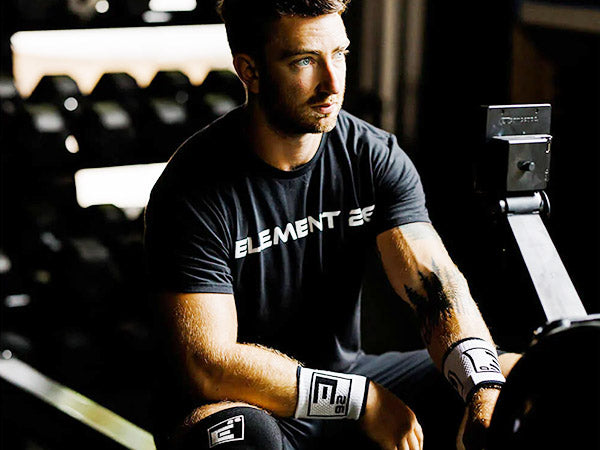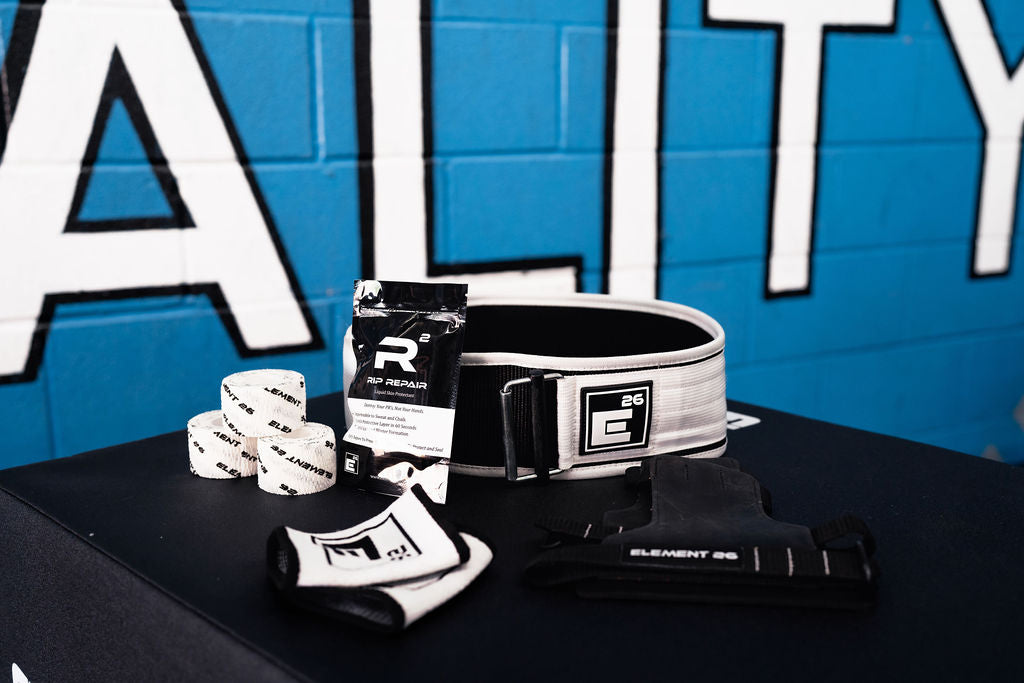
Do You Need a Belt for your Home WODs??
Hey there!
If you’re reading this blog, it’s most likely because you have your own gym at home or at least own some equipment and you’re curious as to whether or not a belt can help you during your WODs at home.
I’m a mind-reader ;)
Before I start going into the details, allow me to break down the flow of this blog by common questions. Each question and answer will have its own section to make it easier for you to follow along. And if you’re like me and you like to bounce around, please do!
Question 1: What are the demands of home gym training and workouts?
Question 2: How can a weightlifting belt help your home gym performance?
Question 3: What features make a weightlifting belt great for your home gym workouts?
Question 4: What is the best belt for you and your home gym workouts?
I’m excited for you since you clearly want to improve your home gym training! If you have any questions at any point while you’re reading this, please reach out and email me ASAP at: support@element26.co.
I will reply to your email and answer all the questions or concerns that you have. Or if you just want to say hi, please do! I’ll be patiently waiting.
Without further ado, here we go!
Question 1: What are the demands of home gym training and workouts?
First, let’s bring up what a home gym may look like. All home gyms will vary in regards to equipment, space, and gear. Some home gyms will be in a garage, some will be in the shed out back, others will be in the corner of your living room. Home gyms are clearly diverse and unique to the individual. In terms of equipment, I’m going to be basic and general. We’ll be here forever if I go into every home gym accessory, but for the majority, home gyms will have some type of dumbbell, barbell, and/or kettlebell setup with maybe a rack and some plates. At the same time, other home gyms will also have bands, towels, foam rollers, steps, jump ropes, etc. As you can tell, there’s a variety of equipment for sure which means there’s a variety of exercises performed. Those gyms that do have barbells, plates and a rack most likely aren’t loading substantial amounts of weights unless you’re a competitive lifter… which I’m jealous of. (Side note: If you do have your own bada$$ home gym, send me pictures to the email above. I’d love to see them.) But due to the lack of weight loading, home gyms require greater volume to deliver a training effect. For example, instead of doing a barbell back squat at the gym with 200 lbs for 5 sets of 5 reps, you’re at home with a 20 lb backpack or 2- 40 lb dumbbells doing 5 sets of 20 reps. So demands with home gym strength training and workouts change which means your gear should also vary based on these demands. Which means, *hint hint*, if you're considering a belt, what you're choosing should be appropriate for the demands of the workout.
Question 2: How can a weightlifting belt help your home gym performance?
To better understand how a weightlifting belt can help your home gym training, let’s talk about what a belt actually does. When using a weight belt, your number one goal is to create stability within and around the abdominal region to support the spine and torso. Increased stability = better performance. Got it? Great. Now let’s talk about how that stability is generated when wearing a belt. I tend to look at this in two ways: increased intra-abdominal pressure in the abdomen, and increased tactile (touch) stimulation to the skin/muscles of the abdomen. A correctly tightened belt will increase the abdominal pressure as you breathe. A big muscle at the base of your ribs called the diaphragm will descend, pushing the abdominal contents (yes, your guts) downwards which then push out against the belt. The belt increases the pressure because there is nowhere else for your guts to go. This in itself creates more stability on the lower back and spine, telling the brain it is more stable. In terms of touch stimulation, have you ever had some elbow pain and then squeezed the muscles around the elbow to notice that the pain goes away? Similar mechanisms are at work here. The receptors in the skin and the abdominal/low-mid back muscles sense increased pressure from the belt and feel more stable as a result.
Now you’re an expert at how a weight belt works, but why do you need extra stability for your home workouts? To answer this honestly, not everyone does. If you have great strength and control of basic movements (squats, deadlift/hinge, overhead press, pushing, pulling) and you’re not hitting a point of moderate-max fatigue, then don’t worry about the belt. However, if you’re pushing yourself to the fatigue limit in total body functional exercise circuits, and/or you’re using a moderately heavy barbell, and/or you’re using “heavy-ish” dumbbells… I’d recommend a belt. As you get tired, even light-moderate weights can pose a challenge to your body’s ability to maintain a position for ideal movement. The biggest threats to maintaining a stable, optimal body position for exercise are: increased loads (weight), and increased fatigue.
To summarize: a belt is incredibly helpful for generating stability during a total body functional home workout and/or a heavier home gym strength training session that poses a risk for form breakdown. And the culprits of form breakdown are increased load (weight being used) and fatigue.
**One thing I did not touch on above is that the belt is very helpful for the larger, total body movements: clean, overhead press, deadlift, squats, snatch…. You get the point! You don’t need a belt for your home workout bicep curls and tricep kickbacks. The smaller muscle movements don’t require as much total body stability.
If you’d like to learn more about weight belts, I’ve written two other blogs in reference to training with belts and if you’re ready wear one:
The function of a weightlifting belt for strength training.
Are you ready to wear a weightlifting belt?
Question 3: What features make a weightlifting belt great for your home gym workouts?
As you know, most home workouts are variable and consist of a mix of equipment, exercises, and prescriptions. And most strength training is going to use submaximal loads due to a limit of equipment and extra weight (remember to shoot me those pics if you have that home gym that’s absolutely STACKED, I need to see it!). Anyways, the features of a belt have to be aligned to the demands of the home workout or training session. So a belt that is light-weight, easy to loosen and tighten, comfortable, not bulky, uniform around, and keeps you stable when you’re fatigued is what you need. So let’s outline two home workouts for a belt that would fit this profile.
“1-Arm dumbbell DT”
12 deadlifts
9 hang power cleans
6 push jerks
5 Rounds on each side
For the above workout, this is a great one for the belt. For the dumbbell let’s assume you have one that is 25 lbs at home. While making sure your form is precise throughout, a belt assists total body stability during the workout. And while doing 5 rounds, you’re going to get tired. With fatigue comes an increased breathing rate. And with an increased breathing rate, you don’t want to tighten the belt all the way. You want it tight enough to stabilize and breathe into but not enough that it compromises your form. So having a belt that allows you an infinite tightening ability (no fixed holes to tighten) is key. Another point to make for the above workout is you’d want a belt that does not purely rely on velcro. Velcro tightening belts will pop open with heavier loads and increased pressure.
Here’s the second home workout example:
“Virus Gone Bad”
1 min/exercise x 3 Rounds total
1- Dumbbell Power Clean (or Kettlebell swing)
2- Push-ups
3- Dumbbell Deadlift
4- Burpee
5- Sit-up
6- Rest
For this workout, a light-weight belt that is easy to adjust is PERFECT. So you’d tighten the belt for the dumbbell power clean; then keep it on, but loosen it for the push-ups; tighten it quickly for the dumbbell deadlift; and loosen it again for the burpee/sit-up. Or if you’re like me, just keep it lightly tightened the entire way through so you don’t have to tighten and untighten it. Whatever way works for you!
So now you’re wondering what belt is best for you and your home workouts, well I got you covered! That’s next!
Question 4: What is the best belt for you and your home workouts?
A home workout or home strength training belt needs to be light-weight, flexible, easy to tighten and loosen, comfortable, uniform around, not bulky AND keep you stable. Well surprise, surprise…. The Element 26 Self-Locking Weightlifting Belt checks the box on every one of those features.

It can be used with any home WOD, workout, or strength training session. This is the same belt used by many athletes involved in functional fitness and cross training because of how versatile and reliable it is. It’s insanely stable yet easy-to-use, light-weight, and comfortable. The absolute PERFECT combination you’d want at home for when the workouts start to get intense. Oh and as the name suggests, it has a self-locking pin to secure the belt strap so the pressure that is generated in the abdominal region does not ‘pop’ the velcro open. To learn more about the Element 26 belt just click the big RED button below.
**One more note: At the end of the day remember that form matters most when maintaining stability. If that’s not on point, then no matter what belt you’re wearing…. won't matter one bit. So while you’re training at home, make sure your form is locked-in and you’re using the belt as a supplement to help maintain proper stability.
If you have any questions after reading this, let me know by shooting me an email to this address: support@element26.co
I will reply ASAP, I promise!
Talk soon. In the meantime keep crushing those home gym workouts and training sessions!
Phil Gauthier
Doctor of Physical Therapy
Strength Coach
Element 26 Co-Founder
Online Store: www.element26.co
Want to further connect with Dr. Phil and the Team at Element 26?
We would love to continue to support you on your fitness journey, so definitely follow us on Instagram. And when posting your training videos and post workout selfies, use the hashtags #element26 and #TeamE26 and then tag us @element26.co so we can share! We'll be here for motivation, accountability, training tips, and gear launches/updates.
If you are ready to have an even deeper connection with other athletes who are all-in on their fitness journey, we invite you to join our private Facebook Group: Team E26: Less Ego, More Iron. The catch, you have to be committed to your journey and committed to helping others along the way. Success is determined by the strength of the community!





